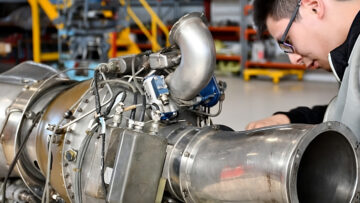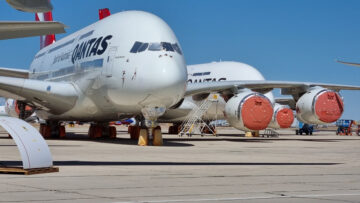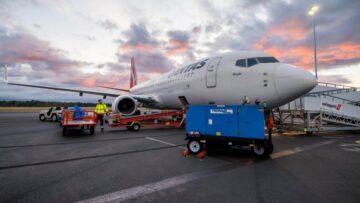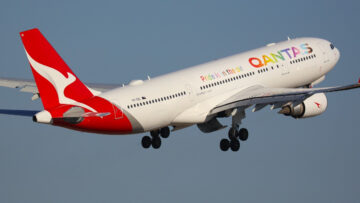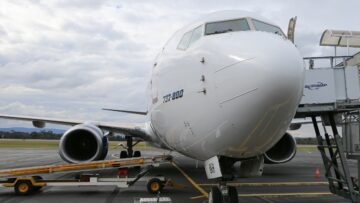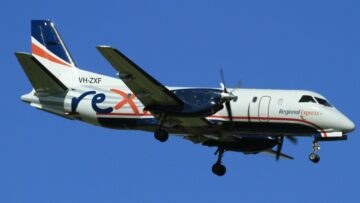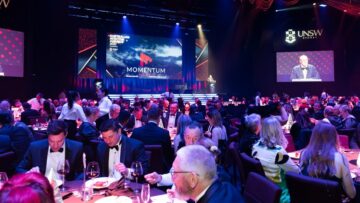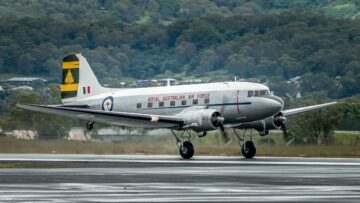
Jetstar has ruled out adding noise-reducing vortex generators to its A320s flying into Brisbane, instead focusing on increasing use of the quieter A320neo and A321neo (NEO) aircraft.
The carrier added two new A321neo LRs to its fleet shortly before Christmas, bringing total NEO numbers to 11, with seven more expected by the end of this year. After considering fitting vortex generators to A320s for noise reduction, Jetstar has since concluded there is no business case to do so.
Vortex generators, when fitted to the underside of A320 wings, can cut noise caused by airflow over the fuel tanks’ circular pressure equalisation vents; according to Lufthansa, which began taking delivery of A320s with vortex generators in 2014, noise levels can be reduced by up to two decibels.
“We have completed a detailed assessment of fitting vortex generators to our existing Airbus A320 fleet which weighs up the cost of installation, the impact to our flight schedule of taking aircraft out of service to complete the work, and the extent of the benefits which are very limited,” a Jetstar spokesperson told the Brisbane Times.
“Currently we are not planning to proceed with installation.”
Jetstar estimates that around a quarter of all its flights into and out of Brisbane will be operated by NEO aircraft this year, news which has been welcomed by Brisbane Airport.
“While we are disappointed the vortex generators will not be retrofitted to Jetstar’s legacy A320 fleet, we are heartened by the news the airline will be prioritising the rollout of its new ultra quiet A321neos to service Brisbane Airport,” an airport spokesperson said in a statement.
Jetstar says the NEO’s more fuel-efficient LEAP engines burn up to 20 per cent less fuel than its previous A321 planes and are up to 50 per cent quieter. According to Jetstar, the NEO fleet reduced emissions by more than 16,000 tonnes in its first year of flying, and has freed up its 787 Dreamliner fleet for longer international routes.
The low-cost carrier is expecting a total of 38 A321neo LR and XLR planes, as well as A320neos, to arrive in coming years.
Noise issues have been a flashpoint at Brisbane Airport since the completion of its new parallel runway in July 2020, which allowed more flight paths to open up, but affected nearby communities in the process.
September 2023 saw a breakthrough when three major international carriers – Singapore Airlines, Emirates and Cathay Pacific – agreed to fly in tailwinds of up to seven knots at Brisbane Airport, allowing more frequent night departures over Moreton Bay.
- SEO Powered Content & PR Distribution. Get Amplified Today.
- PlatoData.Network Vertical Generative Ai. Empower Yourself. Access Here.
- PlatoAiStream. Web3 Intelligence. Knowledge Amplified. Access Here.
- PlatoESG. Carbon, CleanTech, Energy, Environment, Solar, Waste Management. Access Here.
- PlatoHealth. Biotech and Clinical Trials Intelligence. Access Here.
- Source: https://australianaviation.com.au/2024/01/jetstar-focuses-on-new-planes-not-retrofits-to-curb-brisbane-noise/
- :has
- :is
- :not
- $UP
- 000
- 11
- 16
- 20
- 2014
- 2023
- 50
- 77
- a
- A320NEO
- A321NEO
- According
- added
- adding
- affected
- After
- agreed
- Airbus
- aircraft
- airline
- Airlines
- airport
- All
- Allowing
- an
- and
- ARE
- around
- AS
- assessment
- At
- Bay
- BE
- been
- before
- began
- benefits
- breakthrough
- Bringing
- Brisbane
- burn
- business
- but
- by
- CAN
- carriers
- case
- cathay pacific
- caused
- cent
- Christmas
- COM
- coming
- coming years
- Communities
- complete
- Completed
- completion
- concluded
- considering
- Cost
- curb
- Cut
- delivery
- departures
- detailed
- disappointed
- do
- emirates
- Emissions
- end
- Engines
- estimates
- existing
- expected
- expecting
- extent
- First
- fitting
- FLEET
- flight
- Flights
- flying
- focuses
- focusing
- For
- frequent
- Fuel
- generators
- Have
- HTML
- HTTPS
- Impact
- in
- increasing
- installation
- instead
- International
- into
- issues
- ITS
- jpg
- July
- Leap
- Legacy
- less
- levels
- Limited
- longer
- low-cost
- lufthansa
- major
- max-width
- more
- NEO
- New
- news
- night
- no
- Noise
- numbers
- of
- on
- open
- operated
- our
- out
- over
- Pacific
- Parallel
- paths
- per
- Planes
- planning
- plato
- Plato Data Intelligence
- PlatoData
- pressure
- previous
- proceed
- process
- Quarter
- quiet
- Reduced
- reduction
- rollout
- routes
- ruled
- runway
- Said
- saw
- says
- schedule
- service
- seven
- Shortly
- shot
- since
- Singapore
- So
- spokesperson
- Statement
- taking
- than
- that
- The
- There.
- this
- this year
- three
- to
- Total
- two
- Ultra
- use
- very
- we
- weighs
- welcomed
- WELL
- when
- which
- will
- with
- Work
- year
- years
- zephyrnet

